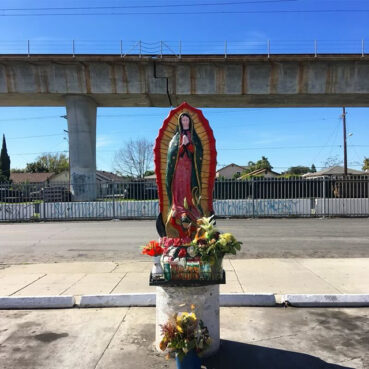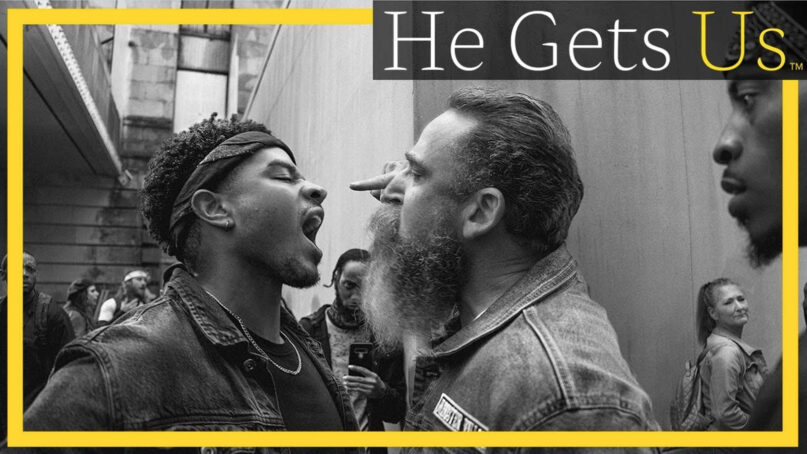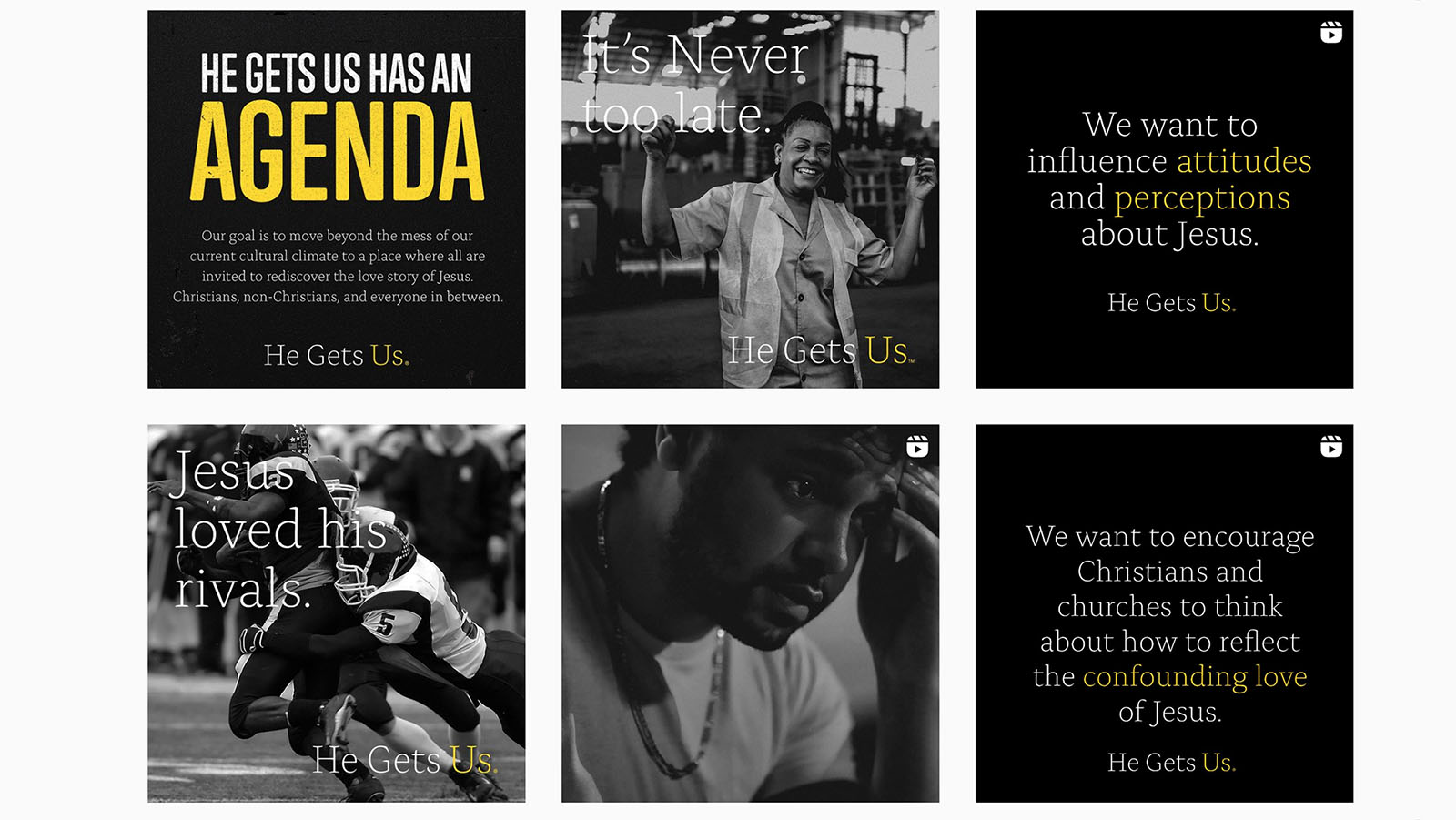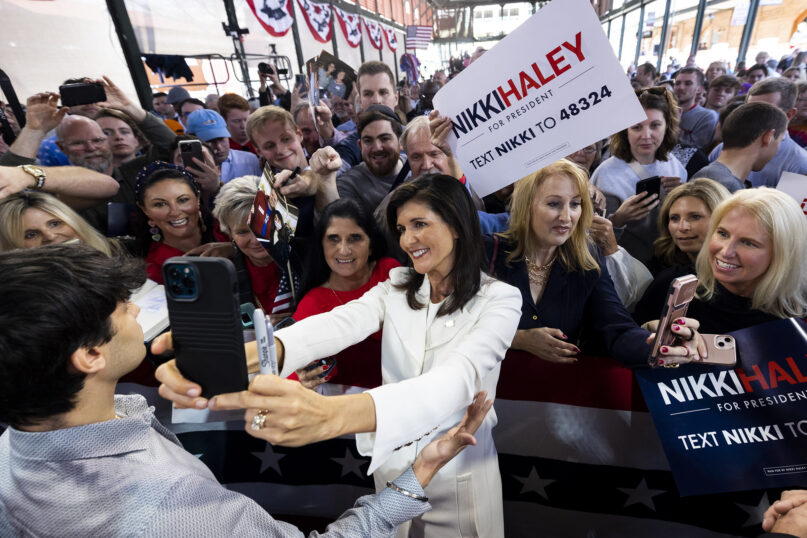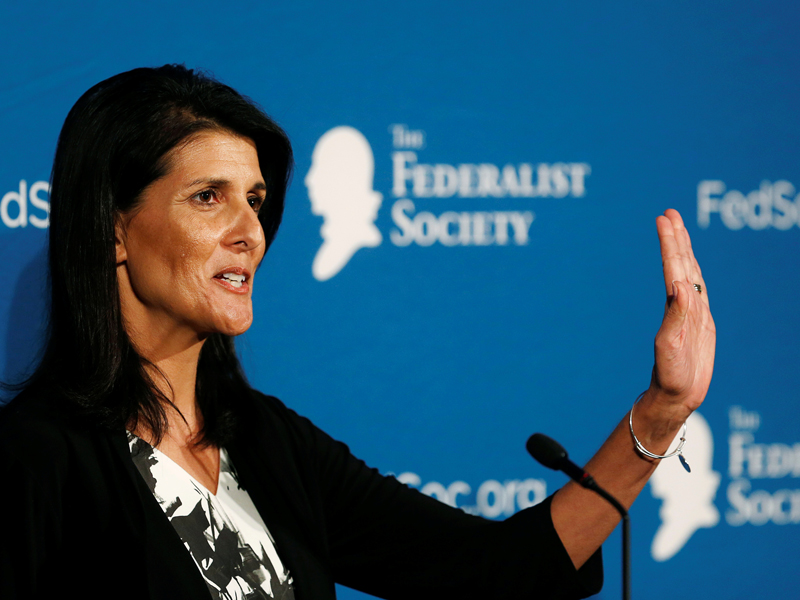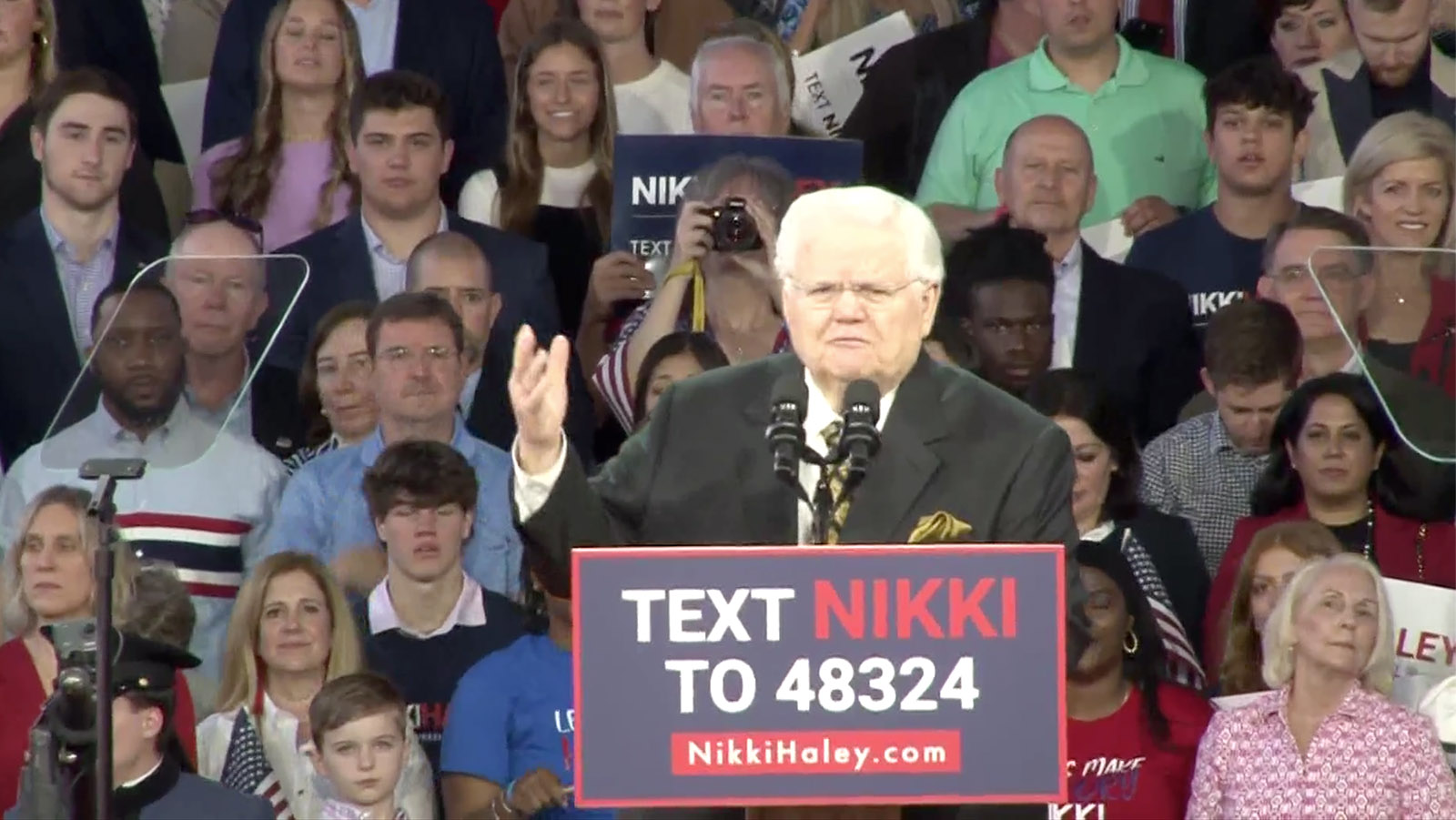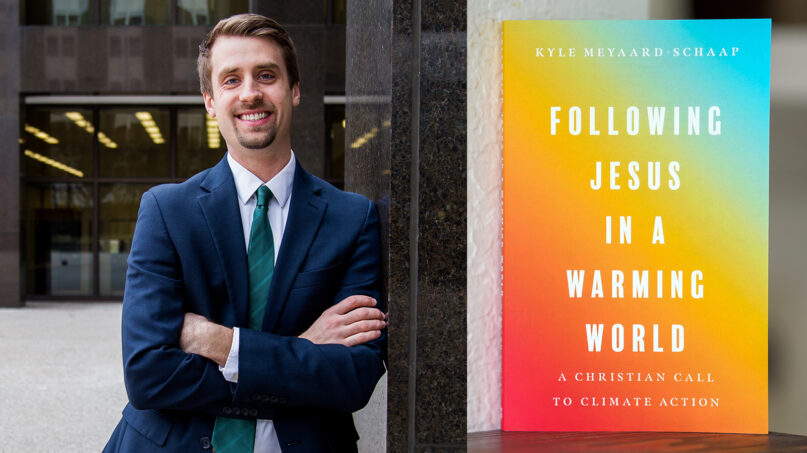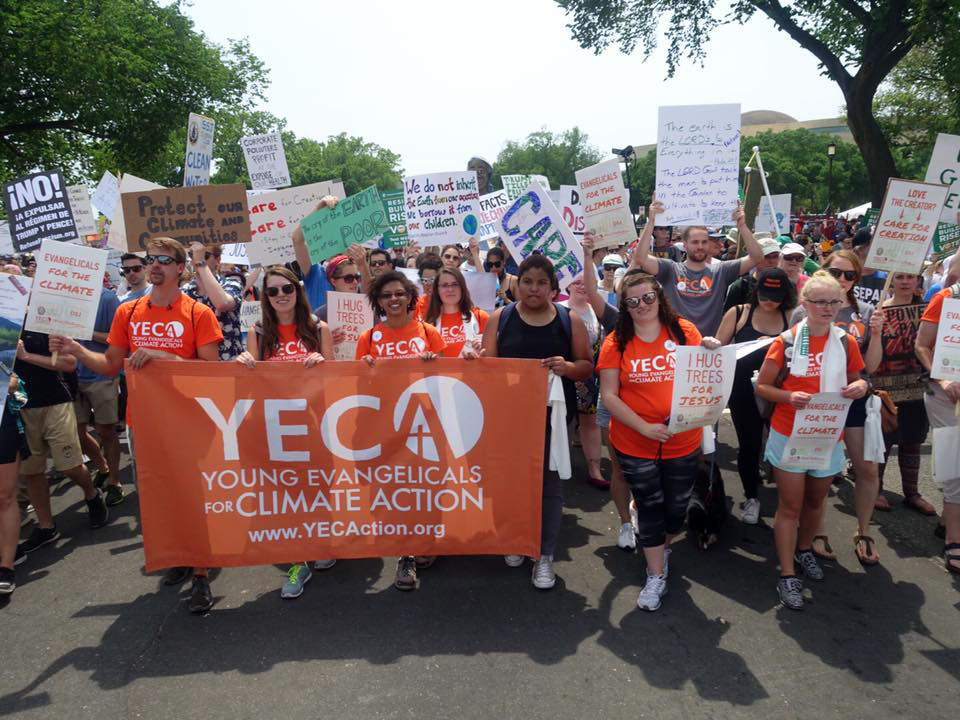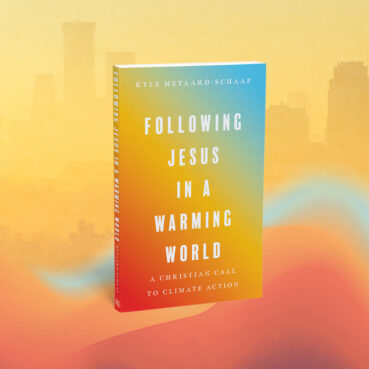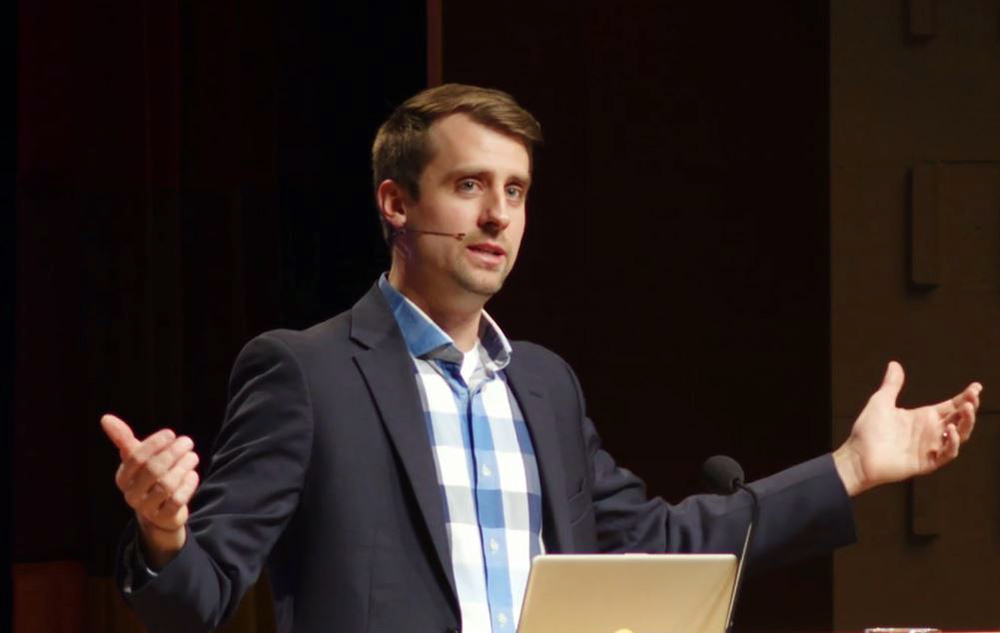Chronicling Los Angeles’ iconic Virgin of Guadalupe street art
'Whenever you see a virgencita you feel safe. You know that your people, your gente, your raza are around,' said Oscar Rodriguez Zapata.
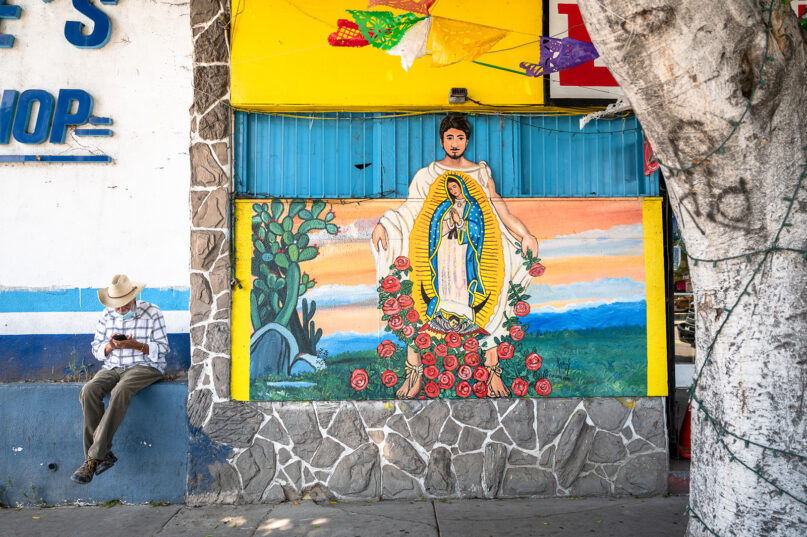
LOS ANGELES (RNS) — There’s nothing that Oscar Rodriguez Zapata enjoys more than going out for a drive to explore Los Angeles’ vast neighborhoods in search of the Virgin of Guadalupe.
He packs his Nikon Z6 II and a Fujifilm X100V and photographs murals, landscapes, storefronts and people across the city’s Historic South Central and Eastside to South Bay. Street vendors, lowriders and the L.A. skyline are among his favorite subjects.
But his biggest LA muse is the Virgin of Guadalupe, said Zapata. Murals, mosaics and other artwork depicting the brown-skinned virgin and patron saint of Mexico grace the walls of laundromats, liquor stores, mini markets, churches, bakeries, taquerias and tire shops.
“Whenever you see a virgencita you feel safe. You know that your people, your gente, your raza are around,” said Zapata, 35, who, though raised Catholic, identifies as nonreligious. “It makes you feel welcome.”
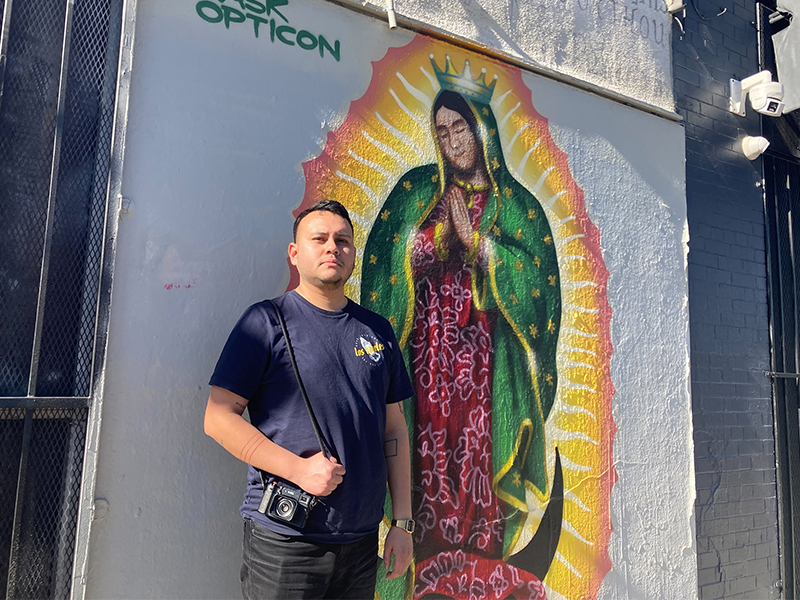
Oscar Rodriguez Zapata poses with a Virgin of Guadalupe painting in Boyle Heights in Los Angeles that he was photographing, Saturday, Jan. 21, 2023. RNS photo by Alejandra Molina
January marked 10 years since he began documenting images of Guadalupe, at first on his phone for his own pleasure, but eventually taking his hobby more seriously, particularly as he noticed more and more Guadalupe images were vanishing. In late 2017, he created an Instagram profile devoted to his photos of Guadalupe murals in order to preserve them. He now has more than 6,000 followers.
RELATED: As he walks neighborhoods, candidate documents his city’s Virgin Mary shrines
Zapata focuses on examples of the Virgin on dilapidated buildings in need of a fresh coat of paint or the more intricate and colorful ones that take up entire wall space, as they risk succumbing to gentrification and displacement of Latino communities in L.A.
The Virgin Mary, he said, “is much more than a religious symbol.”
“It’s part of the community and part of who we are,” Zapata said.
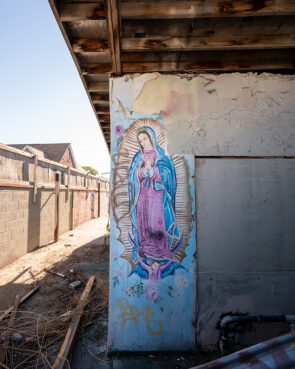
A Virgin of Guadalupe mural in Walnut Park in Los Angeles County on a dilapidated building in Nov. 2021. Photo by Oscar Rodriguez Zapata
Our Lady of Guadalupe is celebrated in many Catholic parishes across Southern California on her feast day, Dec. 12, marking the appearance of Mary to St. Juan Diego, an Indigenous man, near Mexico City in 1531. But Guadalupe finds her way into shrines and murals in Latino neighborhoods year-round, and chroniclers like Zapata document her to pay homage to the culture, faith and traditions of their LA neighbors.
Across Los Angeles, images of the Virgin are believed to thwart vandalism and act as “protector(s) of small immigrant-owned businesses,” according to journalist Sam Quinones’ 2016 book of photographs of murals of the saint, “The Virgin of the American Dream.”
Quinones has seen business owners commission Virgin Mary artworks on their storefronts as “purely a commercial transaction,” he told an audience last April at “Guadalupe: Holy Art in the Streets of Los Angeles,” an event hosted by the Institute for Advanced Catholic Studies at the University of Southern California.
He spoke of Palestinian and Indian merchants who have put Guadalupe on their walls, with one man saying her image was meant “to show people that I’m with them … that I’m not some foreigner guy,” Quinones recalled.
RELATED: Study finds US Latinos are no longer majority-Catholic. Here are some reasons why.
Neither Catholic nor religious, Quinones — a reporter who has covered crime and gangs in the United States and Mexico — said he sees the Virgin as “softening the harshness of life,” recalling that he has witnessed how people turned to her in the midst of violence. Once he started photographing her, he said, he became obsessed, turning his head every time he drove by a neighborhood market to see if he would spot a Guadalupe.
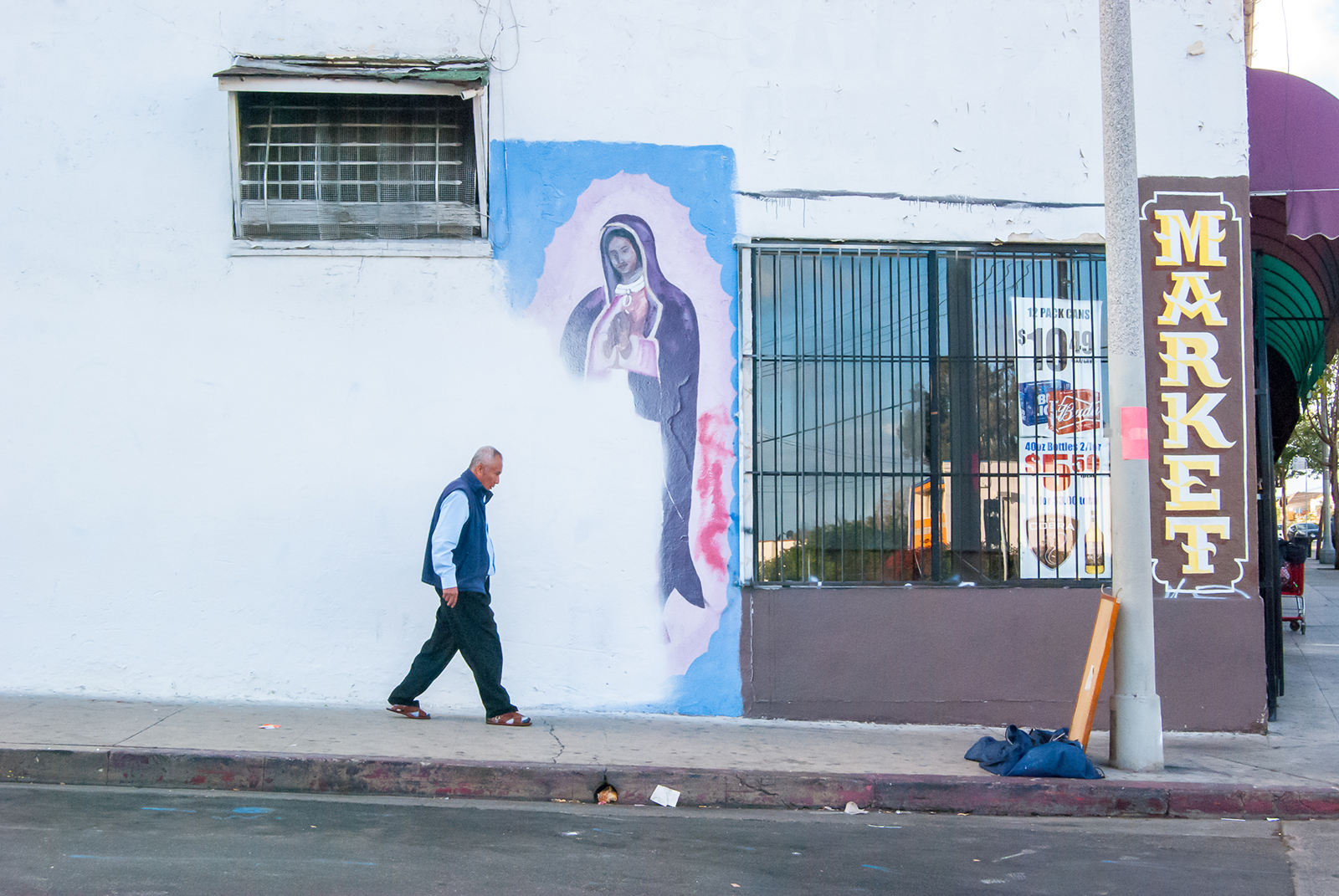
A man passes a partially covered Virgin of Guadalupe mural in Echo Park in Los Angeles in 2018. Photo by Oscar Rodriguez Zapata
Between his reporting in Mexico and documenting Guadalupe in L.A., Quinones understood that images of the Virgin Mary served as a guiding force for undocumented Mexican immigrants “to find a way in this new world.”
“All you’ve got are your guts, your wits and the Virgin of Guadalupe,” he said.
RELATED: In this LA neighborhood, residents unite to bless one of its most sacred murals
Brenda Perez created the Restorative Justice for the Arts project to help restore and preserve what she calls “windows into the spiritual landscape” of L.A. A doctoral candidate in psychology, Perez has researched how sacred Indigenous symbols and community art can help heal trauma and resist discrimination.
“When murals with her image are whitewashed, it’s a sacrilegious act,” Perez said, recalling a Virgin Mary image on a liquor store wall that was recently painted over. “That’s something that everyone must respect because it’s a culture.”
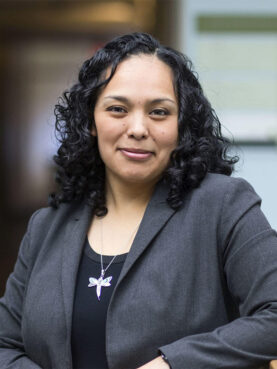
Nichole Flores. Photo by Dan Addison/UVA
Nichole Flores, an associate professor of religious studies at the University of Virginia, said religious and political leaders must work to preserve public art, including murals of the Virgin of Guadalupe, that, she said, “shapes and grounds certain communities.”
Images of Guadalupe, whether embodied in elaborate public murals or displayed on taco trucks, sanctify spaces and “invite us to think about how we can relate with each other across our differences,” said Flores, author of “The Aesthetics of Solidarity: Our Lady of Guadalupe and American Democracy.”
Flores has explored how Guadalupe images shape Chicano communities in Denver, Colorado, where residents have used Guadalupe to stand against gentrification in their neighborhoods.
She recalled asking Denver-based Chicano artist Carlos Fresquez about the significance of his Guadalupe artwork on the side of a liquor store. To the artist, the image was simply a way “to give a sense of place,” Flores said, adding that wherever Guadalupe is, “you will know that Mexicans, Mexican Americans, Chicanos are present there.”
Illustrating her is a way of saying, “Our people are present here,” Flores said. Painting over or covering Guadalupe artwork, “feels like an affront to our dignity and personhood.”
Growing up in the L.A. County city of Paramount, Nydya Mora, a youth librarian with a background in urban planning, said the Virgin of Guadalupe “was everywhere all the time.”
“I just grew fascinated by the creativity that she inspired in people — the creation of these amazing, beautiful, unique murals,” said Mora, 33.
- Photo by Nydya Mora
- Photo by Nydya Mora
In 2012, as she was wrapping up her undergraduate degree at Cal Poly Pomona, Mora began to capture Guadalupe street art, thinking of creating a coffee table book for her Catholic mother “to show an appreciation for our culture.” An Instagram account where she posts her photos of “artistic expressions of devotion in LA” has amassed more than 13,000 followers. Mora has also put together a Google map of her Virgin of Guadalupe sightings.
One of her more striking images shows a statue of the Virgin atop a bollard at a mini market parking lot in Compton. The shrine is embellished with votive candles and vases filled with flowers propped against the post.
Her photographs are scheduled to appear later this year at a museum on the grounds of Forest Lawn Memorial Park, a cemetery in the city of Glendale.
RELATED: 1 in 5 Latino Americans have no religion, the Latinx Humanist Alliance says
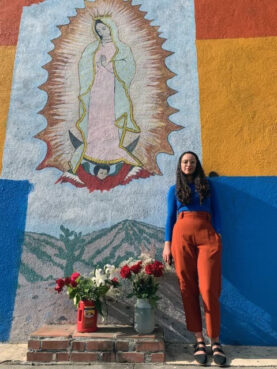
Nydya Mora documents Virgin of Guadalupe murals in Los Angeles. Photo courtesy of Mora
Mora, who grew up culturally Catholic but is not religious, said Guadalupe represents what she cherishes the most: “My mom, my culture and my cities.”
“To see her (Guadalupe) in the streets of Los Angeles, that’s a form of pride for myself,” she said.
Zapata agrees. On a recent Saturday in January, he drove to Boyle Heights in the city’s Eastside to shoot a spray-painted image of Mary on the side of Valerio Family Barbershop.
George Valerio, part owner of the shop, said he commissioned the mural to pay homage to his family’s Catholic faith and to growing up Mexican in the San Gabriel Valley city of El Monte.
Before heading out, Zapata marked the street and specific neighborhood where Guadalupe was featured. Simply captioning the location of the photo with ‘Los Angeles’ doesn’t fully capture its essence, Zapata said.
“I want to represent the people in the community,” he said.
This article was produced under a grant from Fieldstead and Company, Inc. supporting journalistic exploration of the ways faith traditions inspire artistic creativity.

